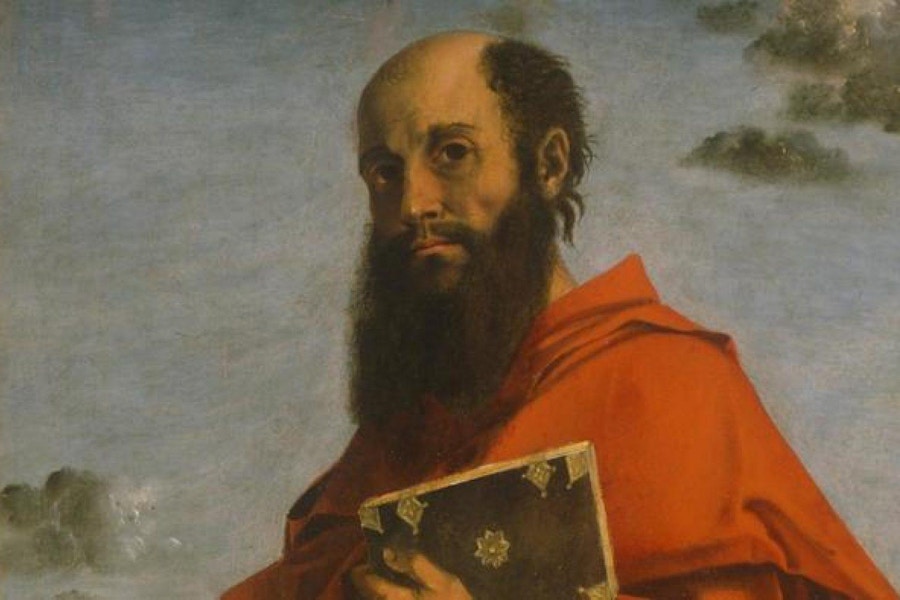Introductory Note:
As we look at the practice of engaging with Scripture through study and lectio divina this week, we first turn to Dallas Willard to be reminded of the aim of this endeavor: “that the ideas and images that governed the life of Christ through his thought life will possess us.”
Christian faith and the earnest pursuit of intellectual inquiry are not in conflict, nor have they ever been. We must never forget that the spiritual giants of old were men and women of deep study as well as deep faith. Dallas’s words serve as a good admonition not to shy away from keeping the old thinker ticking.
Renovaré Team
What is thinking? It is the activity of searching out what must be true, or cannot be true, in light of given facts or assumptions. It extends the information we have and enables us to see the larger picture, both clearly and wholly. It reveals falseness, inaccuracy and error to those who wish to know. It is a powerful gift of God to be used in the service of truth.
Martin Luther, thinking and standing in the power of God before his examiners at Worms, said: “Unless I am convicted by Scripture and plain reason … my conscience is captive to the Word of God. I cannot and will not recant anything, for to go against conscience is neither right nor safe. God help me. Amen.” The earliest printed version of his statement added the famous words: “Here I stand, I cannot do otherwise.”
And so we must apply our thinking to the Word of God. We must thoughtfully take that Word in, dwell upon it, ponder its meaning, explore its implications — especially as it relates to our own lives. We must thoughtfully set it into practice. In doing so, we will be assisted by God’s grace in ways far beyond anything we can understand on our own; and the ideas and images that governed the life of Christ through his thought life will possess us.
Perhaps we are in a time when thinking rightly is more important than ever. The prospering of God’s cause on earth depends upon his people thinking well.
Today we are apt to downplay or disregard the importance of good thinking as opposed to strong faith; and some, disastrously, regard good thinking as being opposed to faith. They do not realize that in so doing they are not honoring God. They do not realize that they are operating on the same satanic principle that produced the killing fields of Cambodia, where those with any sign of education — even the wearing of glasses — were killed on the spot or condemned to starvation and murderous labor.
Too easily we forget that it is great thinkers who have given direction to the people of Christ in their greatest moments: Paul, Augustine, Luther and Wesley to name a few. At the head of the list is Jesus Christ, who was and is the most powerful thinker the world has ever known.
Many Christians today will be surprised to learn that Isaac Watts — the composer of well-known hymns such as “Joy to the World,” “When I Survey the Wondrous Cross” and “O God, Our Help in Ages Past,” along with many others — also taught logic. He wrote a widely used textbook in his day titled, Logic: The Right Use of Reason in the Inquiry After Truth. Those hymns we enjoy so much owe their power to the depth of thought they contain. That is one reason we need to return to them constantly.
Of logic itself Watts said:
The great design of this noble science is to rescue our reasoning powers from their unhappy slavery and darkness; and thus, with all due submission and deference, it offers a humble assistance to divine revelation. Its chief business…is to diffuse a light over the understanding in our inquiries after truth.
Bluntly stated, to serve God well, we must think straight, as crooked thinking — intentional or not — always favors evil. By contrast, to take the “information” of Scripture into a mind thinking straight, under the direction and empowerment of the Holy Spirit, is to place our feet solidly on the high road of spiritual formation under God.
| Excerpted from “Transformation of the Mind,” published in Spring Arbor University Journal, Summer 2003, archived at dwillard.org to whom we gratefully acknowledge their permission to reprint this piece. | ||
| Image Credit: Bartolomeo Montagna Wikimedia Commons CC-BY‑3.0 |
Text First Published May 2003


